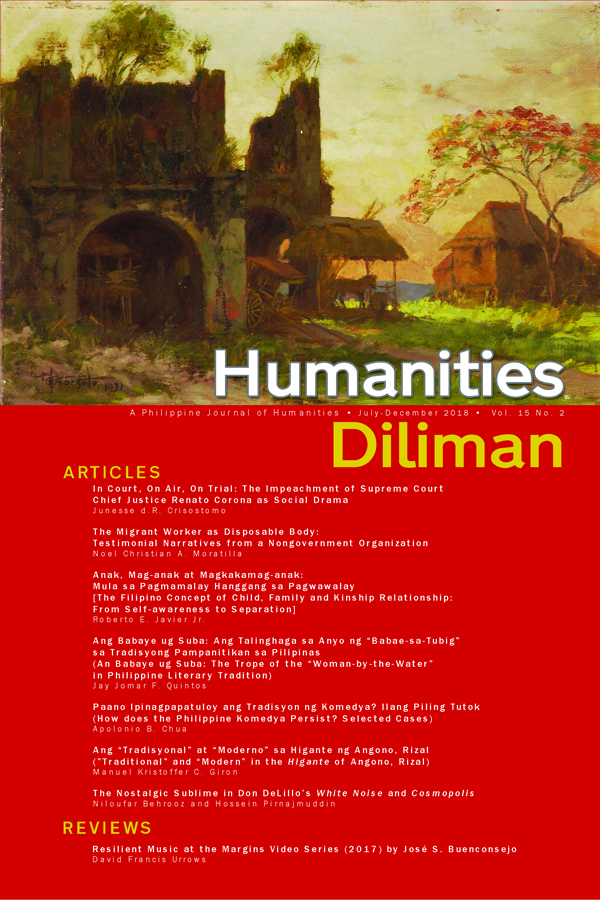Anak, Mag-anak at Magkakamag-anak: Mula sa Pagmamalay Hanggang sa Pagwawalay<br> [The Filipino Concept of Child, Family and Kinship Relationship: From Self-awareness to Separation]
Abstract
Anak/c (the child) and its correlates mag-anak (the family) and magkakamaganak/an (kinship relationship) were analyzed using the techniques in psycholinguistics. Other than the study of the etymology of anak/c, mag-anak and magkakamag-anak/an, the empirical evidence of the meaningful associations of these conceptions were generated using the method of “asking around” (pagtatanong-tanong) in Filipino Psychology. A mag-anak/c is founded from anak/c and firmed up in Filipino parenting practices or pagmamagulang. The pagmamagulang fosters utang na loob. The anak/c is key to the mag-anak/c and to the magkakamag-anak/c-an. The care and nurturance of every anak/c is of prime importance in the kamag-anak/c-an. Ritual relationships such as binyag a.k.a pag-aanak/c strengthens the magkakamag-anak/c-an and extends to other magkakamag-anak/c-an. This relationship and mutual understanding is also deeply rooted in utang na loob of the anak/c with the magulang and of the magulang with their ancestors and their whole clan. Thus, in the midst of modernization anak/c remains at the core of the Filipino consciousness as can be experienced in the cycle of utang na loob.
Keywords: Child, clan, care, child rearing, baptism, family, relatives, kin/kinship relationship, debt of gratitude, realtionship rituals, psycholinguistics, asking around
[The Filipino Concept of Child, Family and Kinship Relationship: From Self-awareness to Separation]. Humanities Diliman: A Philippine Journal of Humanities, [S.l.], v. 15, n. 2, oct. 2018. ISSN 2012-0788. Available at: <https://www.journals.upd.edu.ph/index.php/humanitiesdiliman/article/view/6442>. Date accessed: 09 sep. 2025.


